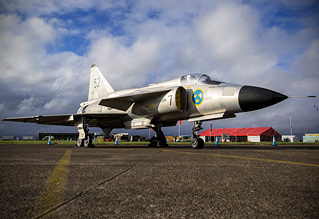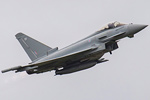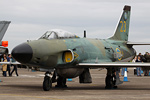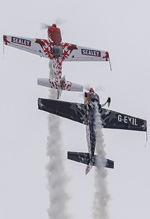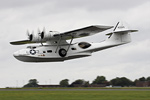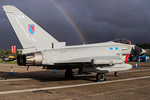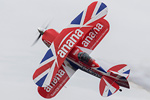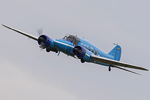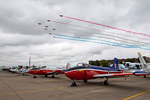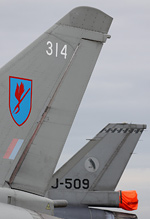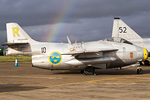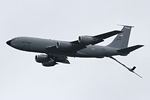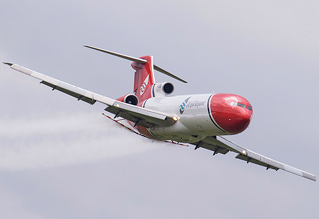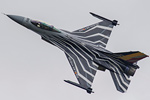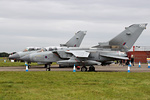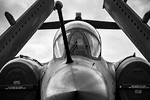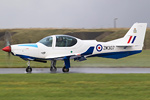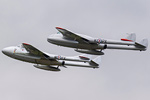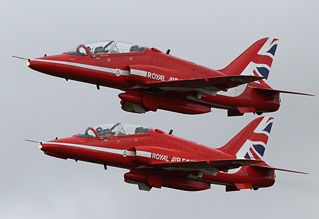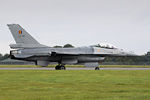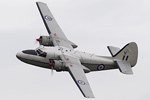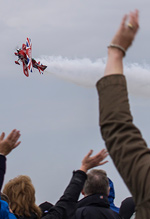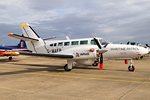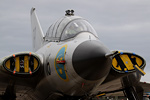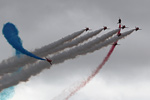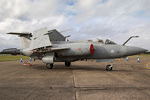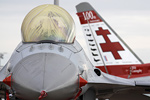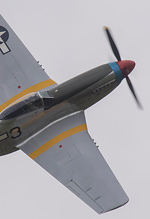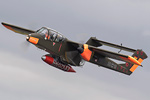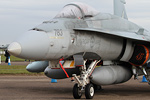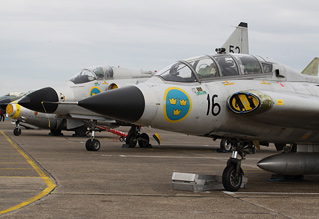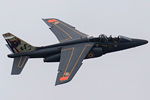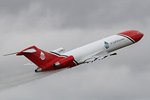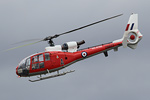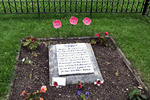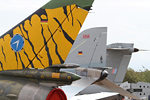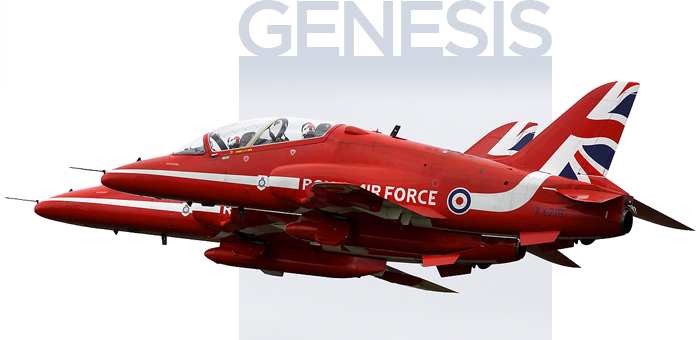
Scampton Airshow
Saturday 9th September - Sunday 10th September 2017
Few regions have such a strong bond with the Royal Air Force as the 'Bomber County' of Lincolnshire - the RAF College Cranwell at the heart of the county is also the heart of the Air Force, and the stations at Coningsby and Waddington remain as vital now as they have ever been, but neither can match the history of RAF Scampton. Now home to the Red Arrows, the base from which the famous Dambusters raid of 1943 was launched has returned to the airshow calendar to host an air display for the first time since the early 1990s.
attended for UK Airshow Review. Photography by the UKAR Staff Team.
Some three years have passed since RAF Waddington last hosted an airshow - postponed for runway work in 2015, the show was cancelled the following September. The official statement at that time mentioned nearby RAF Scampton as a possible alternative location for a future airshow, but in a post-Shoreham world and with the RAF's commitment to airshows dwindling year-on-year, few viewed it as much more than lip service. Indeed, even on a practical level, the station's geography and layout seemed to pose a number of logistical questions with regards to access and car parking, and as home to only the Hawks of the Red Arrows, the capacity and suitability of the hard standing to host an event on a similar scale to Waddington was also questioned.
The Scampton Airshow wasn't formally announced until May 2016, when a provisional date of September 2017 was earmarked and it was confirmed that the RAF Charitable Trust - the same people behind the Air Tattoo at RAF Fairford - would be the driving force behind the new venture. The ties with Fairford were immediately apparent upon arrival - Air Tattoo style security and bag searches were the first point of contact once parked, and the showground had an immediately familiar feel; from the colour coded entry points, the themed "zones" and "service stations" right down to the infamous blue cones, this show very much had an aura of 'RIAT on-tour'.
Less familiar to RIAT attendees was the shuttle bus entry. With limited space on-site, the nearby Lincolnshire showground was used for car parking, with only enclosure pass holders able to park on the airfield itself. Everyone else was relegated to queuing for a bus to complete the final leg of their journey. On paper, this seemed likely to be the biggest potential banana skin with the new airshow setup - getting thousands of visitors from the showground to the airfield was going to require a lot of co-ordination and planning. It was a pleasant surprise therefore that the operation was slick and efficient, and deserving of much praise - our party of two were seated on the first bus for which we queued and were inside the venue a mere ten minutes later. Even more impressive was the efficiency of the exit arrangements; as ever, people arrive over the course of several hours, but all want to leave at the same time. Despite joining thousands of others immediately after the conclusion of the flying programme, it was little more than half an hour until we were back at the car park and from there we were away with no hassle.
The aforementioned blue cones marked out a small, but very high calibre static park. The classic jets of two stables were the highlights, with resident operation Hawker Hunter Aviation's seldom seen collection of Buccaneer, F-4F Phantom, Su-22 Fitter and Hawker Hunter enjoying a very rare public airing. The Buccaneer in particular looked immaculate. The other headline act were quite a late addition to the show line-up; stars of the RAF Waddington Airshow back in 2013, the Swedish Air Force Historic Flight returned to Lincolnshire with a full compliment of Tunnan, Draken, Viggen and for the first time, the Lansen. Unfortunately, the post-Shoreham re-writing of the airshow regulations has invalidated the display authorisations of the Swedish pilots, and as they are seemingly in no rush to acquire paperwork that will keep the UK CAA happy, this fabulous collection of SAABs remained grounded. Strides were made to attempt to get at least one of these jets into the flying display, but to no avail. Bringing the static park up to date, there was a small assortment of modern military jets from across Europe, however it was the sole CF-188A Hornet which attracted most attention from visiting enthusiasts.
The RAF were represented by a pair of Typhoons from 6 and 41 squadrons, both still carrying squadron markings that are rapidly disappearing from the fleet. Two unmarked Tornado GR4s also joined them, which probably represents a fair chunk of the serviceable airframes left as the type enters the end of its stellar service. An assortment of Royal Air Force training types were also present, including the first appearance of a Grob 120 Prefect T1 wearing its military serial number. The biggest aircraft on the participation list - an Airbus A400M Atlas from 70 Squadron - was absent due to a late re-tasking on humanitarian relief operations in the Caribbean.
Without question, the flying display was this event's weakest link. Whilst there was nothing bad on show, the overall programme had more in common with a top-line seaside show than it did with RAF Waddington or even RIAT. Not a problem in and of itself, but when you're charging £39, people will naturally expect more than a very common and repeatable line-up. As discussed at length on our forums, this show was at least £10 too expensive, especially when compared with similarly-sized shows like Dunsfold's Wings & Wheels, or perhaps more aptly, the RAF's own show at RAF Cosford which boasted more international flying displays for a £25 ticket. A clash with the spectacular Sanicole airshow in Belgium clearly didn't help, but even allowing for this being a first attempt, more was expected given the premium price-tag.
Star performers in the flying display included the scarcely seen Percival Pembroke, flown with verve by Jon Corley. Making it's only UK appearance this year, the Armée de l'Air's Alpha Jet solo display was another highlight with a precise and creative routine. The Norwegian Historic Flight's Vampire Pair flew close formation superbly given the strong winds late on Sunday, though their topside passes were some considerable distance from crowd centre. T2 Aviation's Boeing 727 is also worthy of mention - consisting of only three passes, it wasn't as dynamic as the debut at Duxford in 2014, but the addition of the water drop is a nice touch. A gear down pass, or even an overshoot, would add a little more substance and variety to complete the demo.
The Red Arrows suffered mixed fortunes across the two days - already a man down with Red 5 absent on paternity leave, Saturday's display was reduced to just four jets when technical issues struck Red 3 on the runway, forcing the entirety of Enid formation to drop out. Sunday's show was flown with the "loser formation" of eight aircraft, albeit a flat display thanks to the low cloud base. The BBMF too had a weekend of contrast. Following three weeks on the ground, tireless work to fit servicable reduction gearboxes on the Merlin engines of the Lancaster and Hurricane PZ865 facilitated air tests on Saturday morning, which were successfully completed and allowed for a return to airshow duties in the afternoon. Sadly for those attending on Sunday, the high winds scuppered their appearance.
The only other RAF aircraft to feature in the display were the Typhoon solo, a Sentinel R1 flying a single formation pass with the Red Arrows on both days and on Saturday only, an E-3D flypast. Not so much a reflection on the show itself, more the RAF's declining support of airshows in this country. It was sad that the Chinook's season couldn't have included one additional weekend, nor that the Army Air Corps could have extended their season to support this event. Both would have been welcome, as helicopters were under represented. We would hope that future events will be better supported by the Royal Navy and Army Air Corps to bolster the participation list.
All told, this show was a pleasant surprise, let down by the weather more than anything else. The organisation at every level was well-oiled, and Scampton itself has potential as a venue - the scenery is generally quite clean and, British summer permitting, the 11am-4pm flight schedule means the sun is over your shoulder for the bulk of the day. The five-hour time slot gives a couple of hours either side of the programme to take in the rest of the showground and the historic airfield, including the museum and the grave of Wing Commander Guy Gibson's dog outside Hangar 2.
Future Scampton Airshows will need to better justify their not insignificant ticket prices, but there's hope for growth in that regard now the concept has been tested and its merits proven. Avoiding conflicting dates with other European displays would also help, though 2018s running is already noted as clashing with Kleine-Brogel, but in fairness they had all they needed to make this one truly memorable - it's just a shame that paperwork kept the stars grounded.

